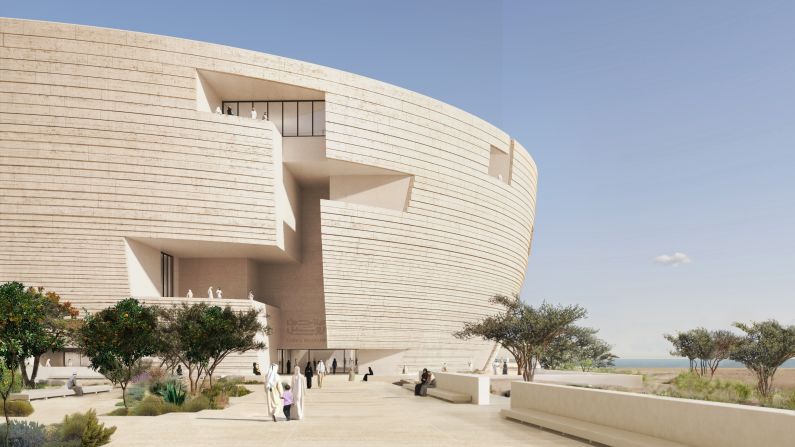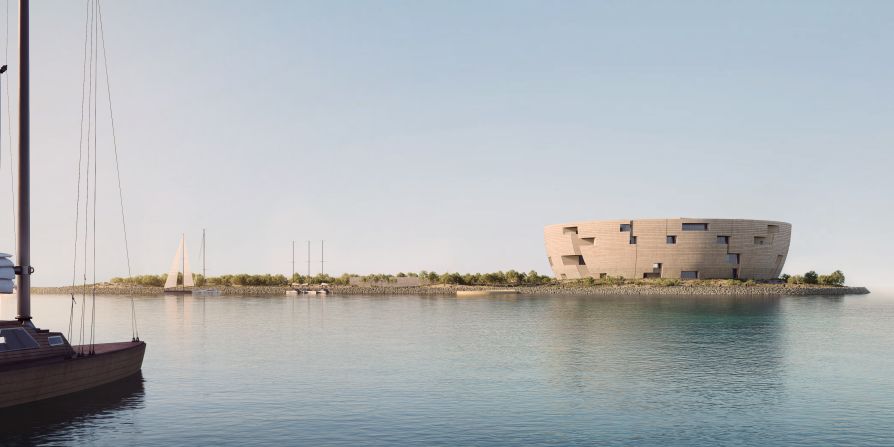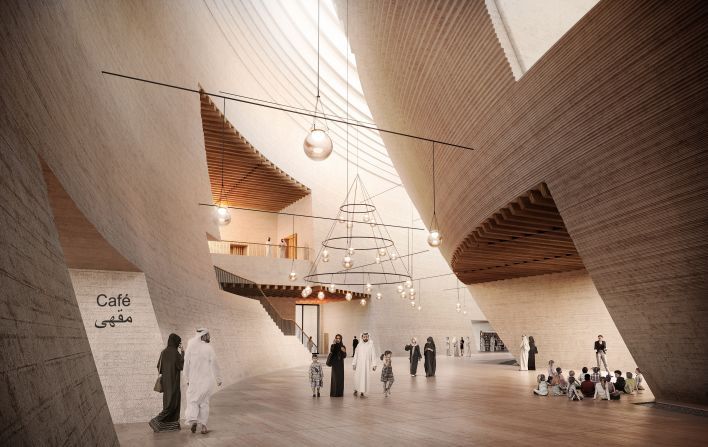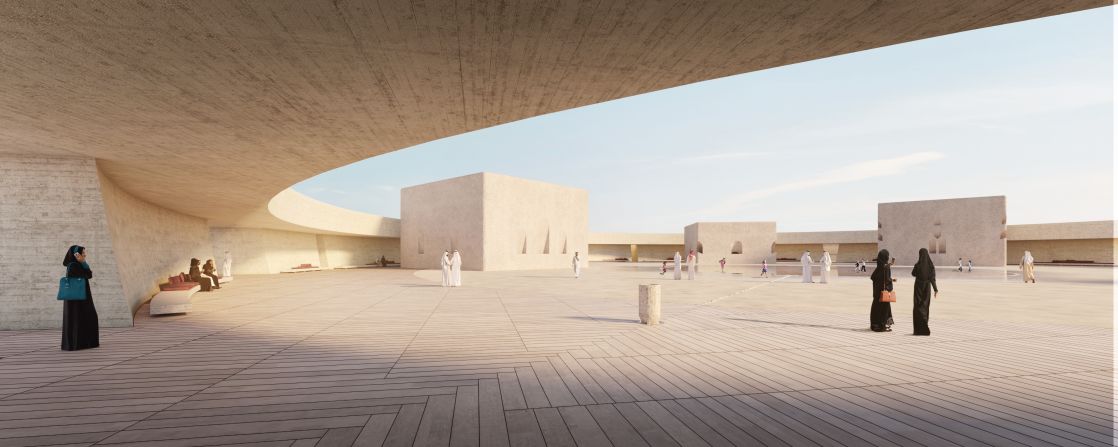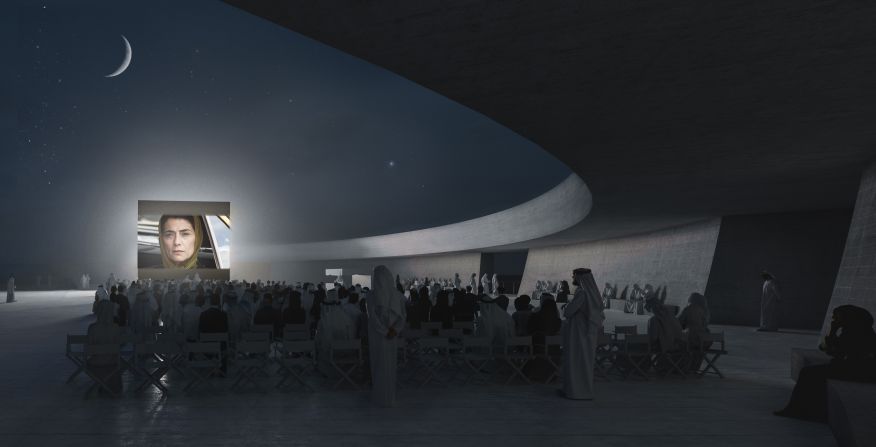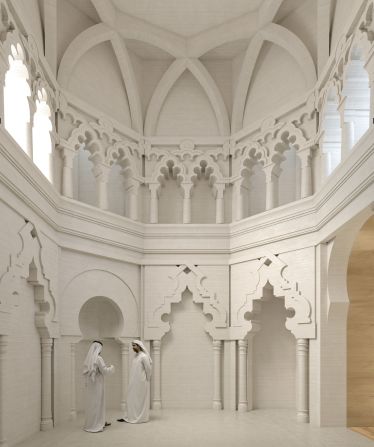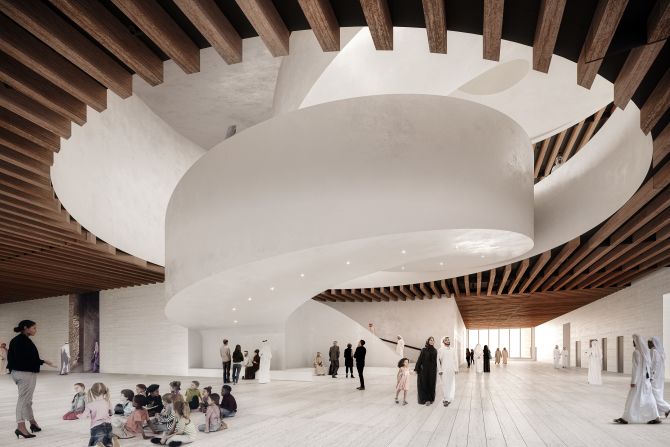Lusail, Qatar, will get a five-story museum
Editor’s Note: This CNN Travel series is, or was, sponsored by the country it highlights. CNN retains full editorial control over subject matter, reporting and frequency of the articles and videos within the sponsorship, in compliance with?our policy.
The skyline of Qatar’s shiny new city of Lusail is to receive an eye-catching addition with a museum and arts hub that boasts a striking circular design.
Set to begin construction later this year, the Lusail Museum will be 30 meters (98 feet) tall, spread over five levels. The building will have a footprint of 11,000 square meters (118,000 square feet) on a site that’s more than 10 times that size and will include areas for art exhibitions and a “think tank” space for discussions on global issues.
Dubbed Qatar’s “City of the Future,” Lusail is around 10 miles north of Qatar’s capital, Doha. Construction of Lusail began in 2006 and the rapidly developing city is home to one of the Gulf state’s most iconic recent skyscrapers, the Katara Towers. Another of its architectural centerpieces, the Lusail Stadium, played host to the 2022 FIFA World Cup final. Upon completion, the city is expected to have the capacity to house 200,000 residents.
Much of the museum’s design is inspired by Muslim architecture and culture, as well as the surrounding environment, says architect Jacques Herzog. He explains that the crescent shape, found throughout Islamic culture, was a key factor when designing the building. Inside, a crescent-shaped “boulevard” will guide visitors through the museum.
“It’s a piece of identity for some Muslim dynasties but also in a more pragmatic way, it’s a boulevard curve where you don’t see exactly where it ends. That’s a detail which is important for us,” says Herzog.
“Where you start and where you end is not really predetermined and it leaves room for imagination.”
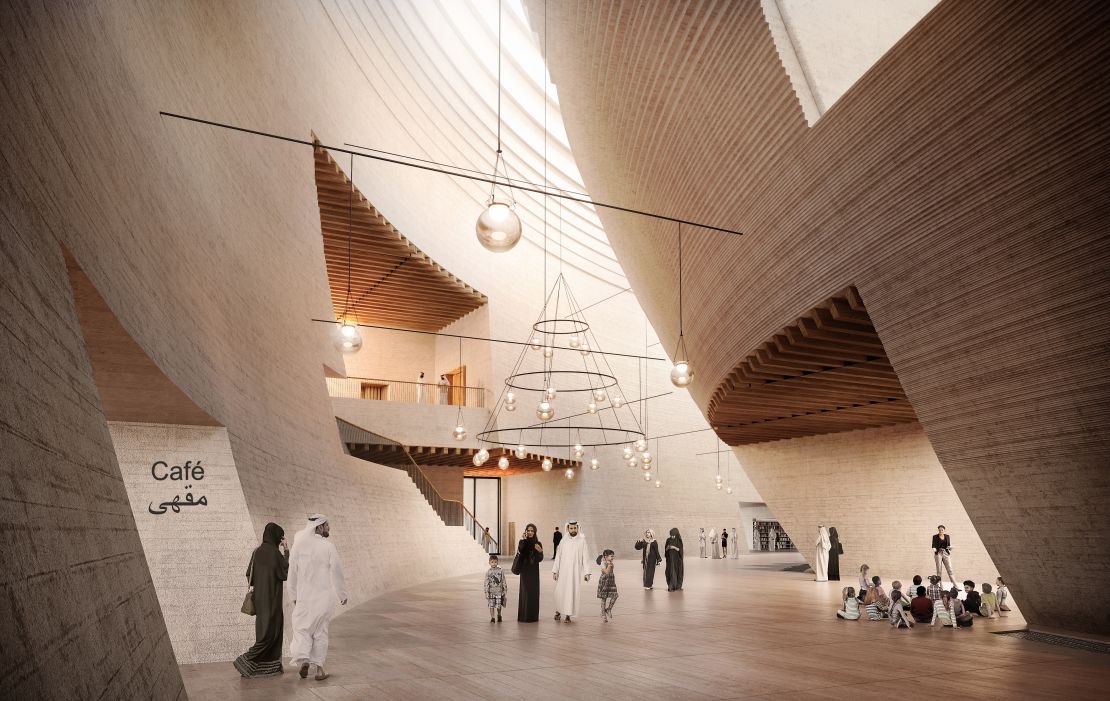
The co-founder of Swiss architectural firm Herzog & de Meuron is no stranger to museum designs. The firm previously worked on the M+ Museum in Hong Kong and Pérez Art Museum in Miami, as well as Beijing National Stadium for the 2008 Olympics and the Tate Modern in London.
Herzog hopes this project will fit not only within Lusail’s skyline but the sand, rock and sea that will surround it. The museum will be built on Al Maha Island, a piece of reclaimed land just off the coast, part of a Qatar coastline that Herzog says is constantly changing.
Last December, the location for the museum was marked with a ground-breaking ceremony. New renderings of the building have also been recently released. The structure will be made up of mostly local materials, not only referencing the idea of connecting the museum to the land that will surround it, but for environmental concerns too. “We want to do something for which you do not need to import everything. We want to make this building a contribution on the ecological level,” says Herzog.?
The museum is also set to have green spaces, with local trees and plants, while solar panels and effective water use management will partly offset its CO2 emissions and reduce water consumption.
Orientalist art
The building will include various rooms for regular exhibitions and Orientalist artwork, a type of art that peaked in popularity during the 19th century, representing the West’s perception of North Africa and the Middle East at the time, often presenting the region as a place of beauty and intrigue.
The highlight of the art space will be four “anchor rooms,” each of which is inspired by classic architecture from four corners of the Islamic cultural world. The northern anchor is inspired by Istanbul, the southern by Cairo, the western by Zaragoza in Spain and the eastern anchor room by Isfahan in Iran.
“It is something that has kept me busy intellectually for many years, the idea to take pieces from historic buildings that could also be contemporary and relocate them somewhere else … clashing them into a contemporary structure,” Herzog says.
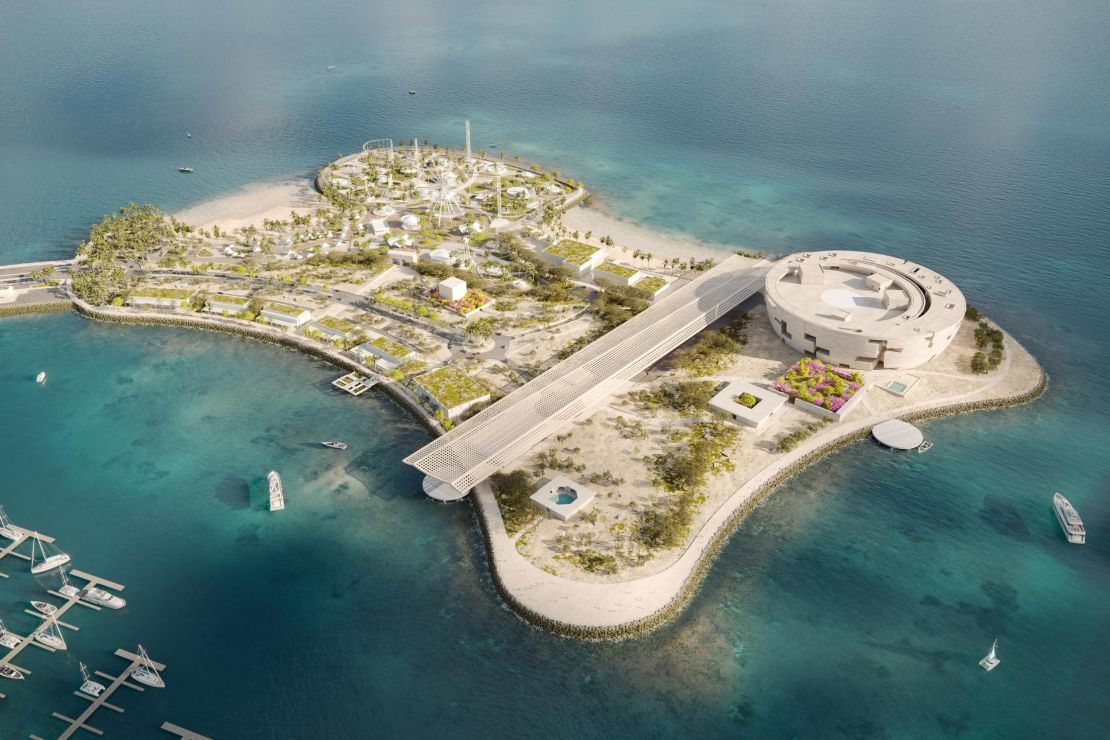
The rooms designated for dialogue are intended for everything from debates between scholars to hosting mediations between global players. In recent years, Qatar has taken up the role of mediator in the Ukraine conflict and Israel-Hamas war.
The museum has also been described as a “layered souq,” an idea that links to the traditional marketplaces founded across the Middle East.
Qatar’s own Souq Waqif is one of Doha’s most iconic features. The concept is to have spaces such as eateries, shops and a mosque on multiple floors within the museum. “I believe this will become a major spine inside the building. It’s kind of a stack, a city in itself,” says Herzog. “It has to be like this, to have this richness and diversity.”
For Herzog, the legacy of Lusail Museum is one of the main considerations behind its design. “My only interest is to do something which can be carried on for generations,” he says.
“It’s important that cities have these museums because it attracts new generations and offers art as a tool to see the world in a different way … People can exchange discussions about art, about events around the world. I think that makes it different from any other museum we have been working on.”
Lusail Museum is expected to be completed in 2029.
